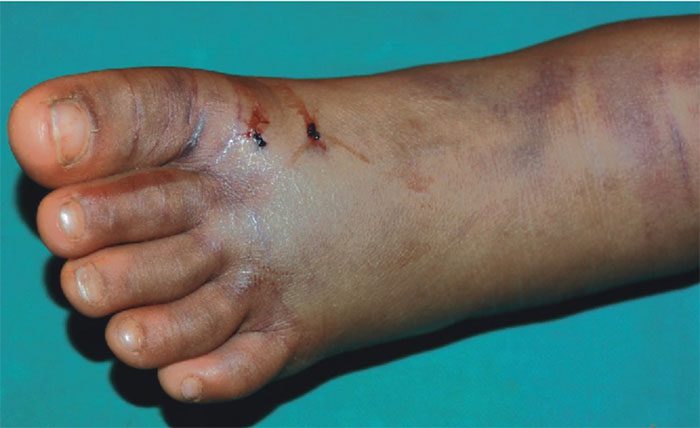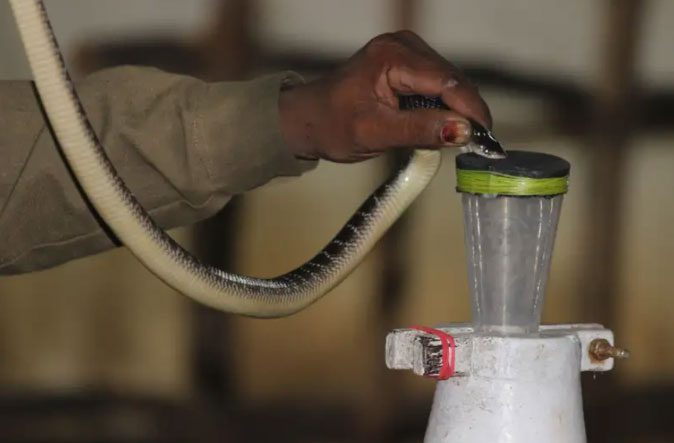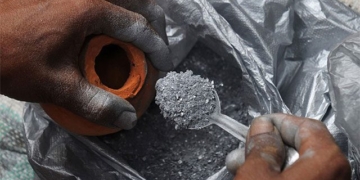India currently has the highest snakebite mortality rate in the world, with approximately 58,000 people dying from snake bites each year.
Indians and the Fear of Venomous Snakes
Among the 3,500 snake species worldwide, about 600 are venomous. Most of them use saliva, with toxins secreted through fangs in their mouths to paralyze or kill their prey.

An Indian cobra found in the agricultural land of Kanchipuram, Tamil Nadu, India (Photo: MCBT).
This knowledge has been known to humans for a long time. We have also developed various types of antivenoms from snake venom. However, deaths from snake bites remain a pressing issue in India, primarily because the poverty rate in the country remains high.
According to the Million Death Study, one of the largest global studies on early mortality rates, approximately 58,000 Indians die each year from snake bites—the highest in the world.
Concern has been raised by officials that an increasing number of bites come from less common venomous snake species in specific regions of the country.
The main reason is that people living in rural India frequently encounter various types of snakes, and they are most likely to be bitten when walking barefoot through fields.
As a result, they may not reach major hospitals until hours after being bitten and are forced to rely on natural or traditional remedies. This has led to many cases requiring amputations or losing limbs due to snake venom.
Moreover, researchers at the Indian Institute of Science note that the only consistent solution is antivenom, which is gradually becoming less effective.

Untreated snake bites can have severe consequences. (Photo: Popsci).
Ongoing Challenges
MV Khadilkar, co-founder of the antivenom production company Premium Serums, believes that producing “weapons against snake venom” is a highly challenging technological process.
This product is primarily produced by injecting small, harmless doses of snake venom into horses and gradually increasing the dosage.
As the horse’s body produces proteins in response to the venom, known as antibodies, researchers extract them from the horse’s body and process them into antivenom. However, this method faces many limitations due to wildlife laws and drug production regulations in India.
It is known that there are a total of 7 Indian companies specializing in producing antivenom in this manner, with an output of 8 million vials per year. Nevertheless, many challenges persist, causing this medication either not to reach the public or fail to be effective.
Firstly, producing antivenom suitable for all different regions of India is extremely challenging. This is a dilemma in producing antivenom that must be affordable without compromising quality.
“The difficulty in producing antivenom is a problem for the poor,” Khadilkar states. “It requires significant effort in production, but the profits are not high.”

Companies in India produce 8 million vials of antivenom each year, but many of these do not reach the public (Photo: MCBT).
Additionally, according to Gnaneswar Ch, head of the Snake Conservation and Snakebite Mitigation Project, although India produces sufficient venom from 4 major groups of venomous snakes, the antivenom does not always reach those who need it most.
Especially in rural hospitals and local health centers—where snakebite cases are frequently reported—supplies are always lacking.
Even when facilities have antivenom, they cannot treat all snake bites due to the diversity of species in nature.
Whitaker, head of the Global Snakebite Initiative, stated: “The issue lies in the different venoms among snake species, as well as geographical factors. Venom also varies with different seasons, even within the same snake.”
This leads to antivenom potentially being ineffective for bites from the same species or related species across different regions of the country.
Finally, there is the issue of quality. The effectiveness of antivenom typically depends on the potency of the mixture of biological substances, including amino acids, carbohydrates, fats, nucleic acids, peptides, and proteins.
<pThe best method for extracting venom, as recommended by the World Health Organization (WHO), is very difficult to achieve in India, considering the existing wildlife and pharmaceutical production laws.
More importantly, as mentioned, companies need to keep the cost of venom production to a minimum.
This, combined with the practical conditions for storing and preserving the medication, causes the biological components in the antivenom to degrade or lose potency when used.


















































